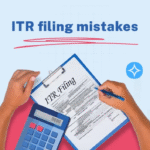Introduction
If you want to sell Teachers Pay Teachers (TpT) products, you can choose from various options: digital or physical, teaching tools or consumables, and more. We’ve covered you with these step-by-step instructions for uploading your product to our marketplace.
How do I upload on Teachers Pay Teachers?
- You must have a Teachers Pay Teachers account.
- You must have an item to sell on the site: a lesson plan, printable, or any other educational material you create yourself.
- You will need to upload all of the necessary information for your product, including the Cover photo, Description Price, a Category Thumbnail image (your book cover)
How does the process work?
Uploading a product to TpT is easy.
- First, make sure your product is ready to sell. To do this, upload your product file and then preview it. If there are any issues with the preview, you’ll see them listed (and can fix them) before saving and publishing your product!
- Next, we’ll ensure that your item meets our quality standards for selling in our marketplace—this includes ensuring that your item’s content matches what you’ve described in the title and description fields of the Info section. You can read more about that here: [link](https://www.teacherspayteachers.com/about/quality-standards).
What’s the first step?
- Go to the Teachers Pay Teachers website and click on “Register” at the top-right corner of the page, as indicated by this image:
- Choose a username that feels like you but is short and easy to remember (if you forget it, you can change it later). Do not use your real name or any personally identifiable information; if someone else knows your password and email account, they can access all your data on the site.
- Enter your preferred email address (and optionally an alternate one), then click on “Sign Up Now!”
What are the guidelines for products I can sell?
The following are not allowed:
- Offensive materials, including text or images that contain profanity.
- Illegal content, including obscene material of any kind.
- Copyrighted materials or images you do not have permission to use except under fair use provisions (for example, using a small portion of an image as part of your product). You can read more on copyright here: https://www.teacherspayteachers.com/pages/copyright.
- Inappropriate images such as pornography or advertisements for other websites. This includes selling products that encourage students to cheat on tests (such as test-taking strategies) or plagiarize work from others.
What is a typical product listing?
A typical product listing includes the following:
- Product title. The title of your product will be displayed on Teacher Pay Teacher, and it should include a short description of what’s included in your resource. For example, if you have a worksheet designed to help students practice writing sentences using capital letters and periods, your product title would be “Capital Letters and Periods Worksheet.”
- Product description. Your product description is where you can provide more details about what students will learn from using it. In this case, you could write something like, “This worksheet helps students practise writing sentences using capital letters and periods.” You can also use this section to detail any other benefits or features of the resource (like its level).
- Product image(s). You should provide one or more images that show what your resource looks like so that buyers know exactly what they’re getting when they purchase it before downloading it to their computer or device (see below). Make sure these are high-quality images—not just blurry screenshots!
Should I limit my product to digital or physical items?
You can choose to limit your product to digital items, physical items, or both. In general, it’s easier to sell digital products because they are more cost-effective and faster for customers to receive. However, physical products are often more lucrative since they generate higher profit margins per sale.
Physical items may also be useful when it’s difficult for customers to find a specific item online (for example: if you’re selling handmade jewellery). This is especially true if there is high demand for your products and you have a limited supply of inventory; this could discourage people from ordering online while providing an incentive for them to purchase in person instead (if they know they can’t buy the item anywhere else).
Can I sell a TpT Gift Certificate as a product?
Yes, you can sell gift certificates on TeachersPay Teachers. Service providers often sell gift certificates for services or products they offer. You can also use them as a reward for students who complete assignments and projects or to thank parents for their support.
You can sell your gift certificate alone or in conjunction with another product (like an ebook). If you choose to sell the gift certificate alone, the buyer will get an email with the code and instructions on how to redeem it once payment has been made.
If you prefer this method but want a more personal touch, try offering your gift certificate as an add-on item so that buyers will have to purchase at least one other item before accessing your discounted price.*
Can I sell more than one item at a time? Can I list it all in one listing, or do I need to list each as a separate product?
You can list up to 20 products in one listing. However, if you want to sell more than 20 items, you must create additional listings.
- Are your items different sizes? If so, list them separately under different sizes (and colours). In other words: If a buyer wants a large size of one item and small size of another item, they can purchase both at once!
When should I set the price for my products?
With Teachers Pay Teachers, many factors can influence the price of your products. The most important of these is the value your customers receive from using them in their classrooms. For example, if you make a set of worksheets for students to use during a lesson on apples in science class, then it would be appropriate for you to charge more for those worksheets than for another set of similar worksheets about oranges.
The second factor that should guide your pricing decisions is how much people are willing to pay for an item like yours. This means knowing what other teachers charge and understanding what consumers are willing to pay when they come across an item with similar features on websites such as eBay and Amazon Marketplace.
It would help if you also considered what competitors charge their customers because this will help determine whether or not it makes sense for you to offer something at a lower price than theirs (and vice versa).
What if my product has multiple grade levels or subjects in which it could be used?
If your product has multiple grade levels, subjects, categories or languages that it could be used, you can create a separate product page for each one. For example:
- In addition to listing my math worksheet on the subject “math” at the primary grade level (3-5), I have also listed it under “math” at the secondary grade level (6-8) and under both “math” and “mathematics.”
- I’ve also made an English version of this worksheet so that teachers who want to use it as supplemental practice with their ELL students can do so without having to translate anything for them.
If you need help with this process, see our article about creating multiple versions of your TpT products.
Can you tell me what prices have been successful on TpT lately?
You should price your product according to the market.
What are other sellers selling similar products for? Are they offering discounts? What are their sales rates? Do you want to sell many products or make a few sales here and there? What’s the general price point for an item like yours on TpT?
You should price your product according to the quality of the product.
How much work did you put into doing this item? How much work does it take someone else to create something like this, even if they don’t have all of your skills or resources available (i.e., if they have access only to templates and not original images)? How much did it cost you in time/money/effort/etc., including any costs associated with creating your own graphics/templates/etc.? Don’t forget that this includes things like shipping materials (if applicable), as well as any additional costs like labour fees charged by third parties such as web designers who helped create websites used in conjunction with products sold on Teachers Pay Teachers (see below).
Conclusion
If you’re struggling with uploading your products on Teachers Pay Teacher, don’t worry! It may be unclear at first, but we’re here to help. Just follow these steps, and you’ll have no problem uploading your item in no time.











магазин аккаунтов https://birzha-accauntov.ru/
продажа аккаунтов соцсетей купить аккаунт
платформа для покупки аккаунтов https://kupit-akkaunt-top.ru/
покупка аккаунтов маркетплейс аккаунтов
Website for Selling Accounts Account Selling Service
Sell accounts Secure Account Purchasing Platform
Gaming account marketplace Account Catalog
Account market Purchase Ready-Made Accounts
gaming account marketplace account marketplace
account store guaranteed accounts
account catalog buy account
purchase ready-made accounts database of accounts for sale
account catalog purchase ready-made accounts
gaming account marketplace account catalog
account store https://accountsmarketdiscount.com/
purchase ready-made accounts account buying service
buy account account market
account trading service database of accounts for sale
guaranteed accounts social media account marketplace
account exchange account buying service
account trading service sell account
account store buy and sell accounts
buy accounts marketplace-social-accounts.org
buy accounts account market
Explore the ranked best online casinos of 2025. Compare bonuses, game selections, and trustworthiness of top platforms for secure and rewarding gameplaycasino slot machine.
account purchase guaranteed accounts
account trading purchase ready-made accounts
website for buying accounts website for selling accounts
accounts market https://accounts-marketplace.xyz
account trading platform https://social-accounts-marketplace.live
ready-made accounts for sale https://accounts-marketplace-best.pro
купить аккаунт https://akkaunty-na-prodazhu.pro
магазин аккаунтов купить аккаунт
магазин аккаунтов https://akkaunt-magazin.online
маркетплейс аккаунтов купить аккаунт
площадка для продажи аккаунтов https://akkaunty-optom.live/
биржа аккаунтов https://online-akkaunty-magazin.xyz
продажа аккаунтов https://akkaunty-dlya-prodazhi.pro/
покупка аккаунтов https://kupit-akkaunt.online/
buy facebook profiles https://buy-ad-accounts.click
buy facebook advertising https://buy-ad-account.click
google ads agency account buy https://buy-ads-account.top
buy a facebook account cheap facebook advertising account
buy google ads verified account buy google ad threshold account
google ads agency accounts buy google ads agency account
buy aged google ads account https://buy-ads-invoice-account.top
buy verified google ads account https://ads-agency-account-buy.click/
buy business manager account https://buy-business-manager.org/
buy verified google ads accounts https://buy-verified-ads-account.work
facebook business manager account buy https://buy-verified-business-manager.org/
buy business manager facebook buy-business-manager-acc.org
verified bm for sale https://business-manager-for-sale.org
facebook business manager account buy buy-business-manager-verified.org
buy facebook business manager verified buy-bm.org
buy bm facebook https://buy-business-manager-accounts.org
buy tiktok ads https://buy-tiktok-ads-account.org
buy tiktok ads https://tiktok-ads-account-buy.org
buy tiktok ads accounts https://tiktok-ads-account-for-sale.org
buy tiktok ads accounts https://tiktok-agency-account-for-sale.org
buy tiktok ads https://buy-tiktok-ads-accounts.org
buy tiktok ads account https://buy-tiktok-business-account.org
buy tiktok ads account https://buy-tiktok-ads.org
¡Saludos, estrategas del desafío !
Casino sin licencia espaГ±ola con ruleta rГЎpida – http://www.casinossinlicenciaenespana.es/ casinos sin licencia en EspaГ±ola
¡Que vivas premios espectaculares !
¡Hola, descubridores de riquezas !
Casinoextranjerosespana.es: apuesta sin documentos – https://www.casinoextranjerosespana.es/# casinos extranjeros
¡Que disfrutes de asombrosas triunfos legendarios !
¡Saludos, participantes de emociones !
Casinos extranjeros con tragamonedas Megaways – https://www.casinosextranjerosenespana.es/ mejores casinos online extranjeros
¡Que vivas increíbles jugadas excepcionales !
¡Hola, seguidores de la emoción !
Casino online fuera de EspaГ±a con diseГ±o adaptable – https://www.casinoonlinefueradeespanol.xyz/ casinoonlinefueradeespanol
¡Que disfrutes de asombrosas momentos memorables !
¡Saludos, cazadores de fortuna !
casinosextranjero.es – juego justo garantizado – https://www.casinosextranjero.es/ п»їcasinos online extranjeros
¡Que vivas increíbles giros exitosos !
¡Hola, exploradores del destino !
Casino online extranjero con pagos verificados – https://casinoextranjero.es/# mejores casinos online extranjeros
¡Que vivas victorias legendarias !
¡Bienvenidos, seguidores de la victoria !
Casino por fuera accesible desde cualquier dispositivo – https://casinofueraespanol.xyz/# casinos online fuera de espaГ±a
¡Que vivas increíbles giros exitosos !
?Hola, visitantes de plataformas de apuestas !
casinosonlinefueradeespanol.xyz – DiversiГіn sin fronteras – https://casinosonlinefueradeespanol.xyz/# casino online fuera de espaГ±a
?Que disfrutes de asombrosas oportunidades inigualables !
¡Hola, descubridores de riquezas !
Casinos sin licencia que aceptan Skrill y Neteller – http://casinosinlicenciaespana.xyz/ casino sin licencia espaГ±ola
¡Que vivas increíbles victorias memorables !
¡Saludos, cazadores de recompensas excepcionales!
Casino sin registro con promociones diarias – https://www.emausong.es/ casino sin licencia en espaГ±a
¡Que disfrutes de increíbles giros exitosos !
¡Saludos, aventureros de experiencias intensas !
Casino con bonos de bienvenida reales y activos – http://bono.sindepositoespana.guru/ casino online bono por registro
¡Que disfrutes de asombrosas botes sorprendentes!
Greetings, witty comedians !
Adult jokes for when you need a laugh – http://jokesforadults.guru/# best jokes for adults
May you enjoy incredible surprising gags!